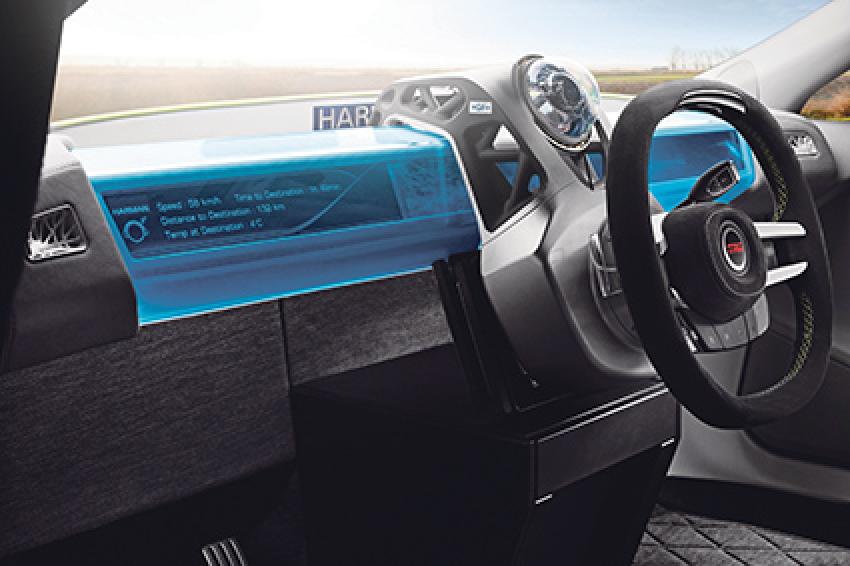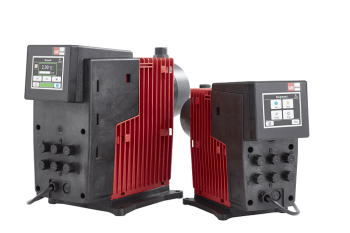Creating Moods with Ambient Lighting in the Automobile Industry
02.10.2014 -
Colors and light affect how we feel. That is why auto makers are placing greater focus on interior lighting elements. For this, the industry needs special light-guiding materials.
Reading lamps, floor light strips, a bright instrument panel-there are already a number of elements that light up car interiors. But the role of lighting inside vehicles is changing. Whereas lighting has so far been mainly functional, as in floor lighting strips that make it easier to get into the car, ambient lighting is now gaining growing attention from car manufacturers. Color and light not only give a vehicle its characteristic and recognizable look, they also create moods and contribute to well-being. Car manufacturers are therefore stepping up their efforts to develop complex light scenarios that change depending on the driving situation. For instance, the light may be brighter when the driver gets into the car, and be dimmed during the drive. At night, the interior lights are blue, since this color is believed to help keep drivers alert.
LEDs Drive Development
This development is being driven by LED technology, which has revolutionized the entire lighting industry. LEDs (light-emitting diodes) are slim, consume little energy over a long service life, and offer huge creative scope through their changing colors. In many applications, they are therefore increasingly replacing classic illuminants, for example in car taillights and front headlamps. But LEDs can only function to full advantage when they are combined with suitable materials. The strong light emitted by these point light sources needs to be distributed throughout the material to provide surface lighting.
Variants of Plexiglas LED, a thermoplastic material produced by Evonik Industries, allow both uniform backlighting without hot spots, and surface lighting, with light fed in via the edges. Special diffusor additives embedded in the material distribute the LED light across the surface. Another advantage is that Plexiglas LED is lightweight. This is an important aspect in automotive construction, where every gram of weight costs fuel. The material is also easy to fabricate and can be machined into any desirable shape. With a scratch-resistant coating, it also easily withstands heavy wear.
In car interiors, LEDs combined with suitable edge-lit light guides make it possible to install ultra-slim components. So far, delicate injection-molded light guides have been used for this purpose, and are concealed in the side doors for indirect lighting. But the manufacturers' new lighting scenarios open up other opportunities for large illuminated surfaces in car interiors. These include car headliners that divide the interior into zones of different brightness. The advantage of large illuminated surfaces is that they produce diffuse light from above, which does not dazzle the vehicle's occupants, unlike point lights.
Headliner Made of Light
One example is the XchangE concept car from Swiss think tank Rinspeed. In the design study, the headliner consists of a sheet of Plexiglas LED measuring roughly two square meters. Without lighting, it is crystal-clear and offers a clear view through the top. With lighting, it can be made to glow in different colors. The light from 358 LEDs is fed into the entire component via the edges. The material then distributes the light evenly across the surface. The car interior is thus homogenously illuminated, providing a light source when the car stops, or ambient lighting during the drive. Another possible use for large-scale applications in car interiors is the instrument panel (picture 2). In the XchangE concept car, it consists of a 1.2-meter-wide display strip made of Plexiglas LED in the steering wheel support. This strip is also transparent when unlit, and can change color when lit. In both cases, a clear view of the instrument panel is provided.
Autonomous Driving
The concept car shows impressively how LEDs can be combined for designing vehicle lighting scenarios. But cars like the XchangE won't be hitting the road any time soon. The vehicle represents a concept for autonomous driving. While experts believe the self-driving car has great potential, it will take some time yet to assert itself. When that time comes, though, interior lighting in vehicles will be sure to gain further importance. After all, if the car drives itself, there will be more time to relax during the drive. And that calls for suitable light, in the form of ambient lighting.





